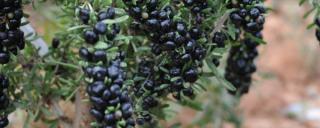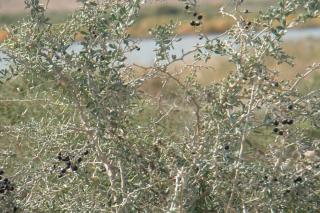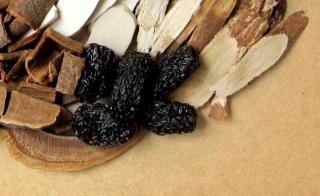

Black goji is a a different species than the more famous red goji berry, but it shares similar growing habits and its berries give the same health benefits.
Black goji key facts:
Botanical name – Lycium ruthenicum
Common name – black goji berry
Family – Solanaceae
Type – fruit shrub
Height – 6 feet (1.50 m)
Planting distance – 1½ feet (50 cm)
Exposure – sun or part shade
Soil – any type, except particularly soggy soil
Planting – spring, fall
Harvest – August to October

Considered a superfood thanks to its unique nutritional value and content (it has a great number of vitamins), black goji also is said to share numerous health benefits. These berries are used in traditional Indian and Chinese medicine.
Best is to sow black goji berries in spring in warm soil, usually a greenhouse or room that has a constant temperature set between 70 and 60°C (20 to 25°C).

Black goji is an extremely hardy shrub (down to nearly -15°F or -25°C). It resists drought well, and you can grow it outdoors even in high altitudes: over 12,500 feet or 3 700 m! Note that its deciduous leafage falls off during the winter season.
When grown in a pot, black goji berry particularly appreciates temperatures in the from 60 to 75°F (15 to 25°C).
Black goji isn’t vulnerable to disease, except for when the weather is cool and moist in the evenings: this can trigger bouts of mildew, especially downy mildew. There aren’t any pests that attack this shrub specifically.
Harvest the black goji berries from August to September, when they’re perfectly ripe. The blooming takes a while to appear: 3 years. This means you’ll only have berries to harvest from the fourth year onwards.
Be careful! : while still green, the berries are toxic. Soak the goji berries in lukewarm water for 24h before drip-drying them and storing them in the refrigerator. They’ll keep for up to 12 months after the harvest. Another option is to dry the black goji berries in an oven set to a low temperature (100°F or 35°C).
